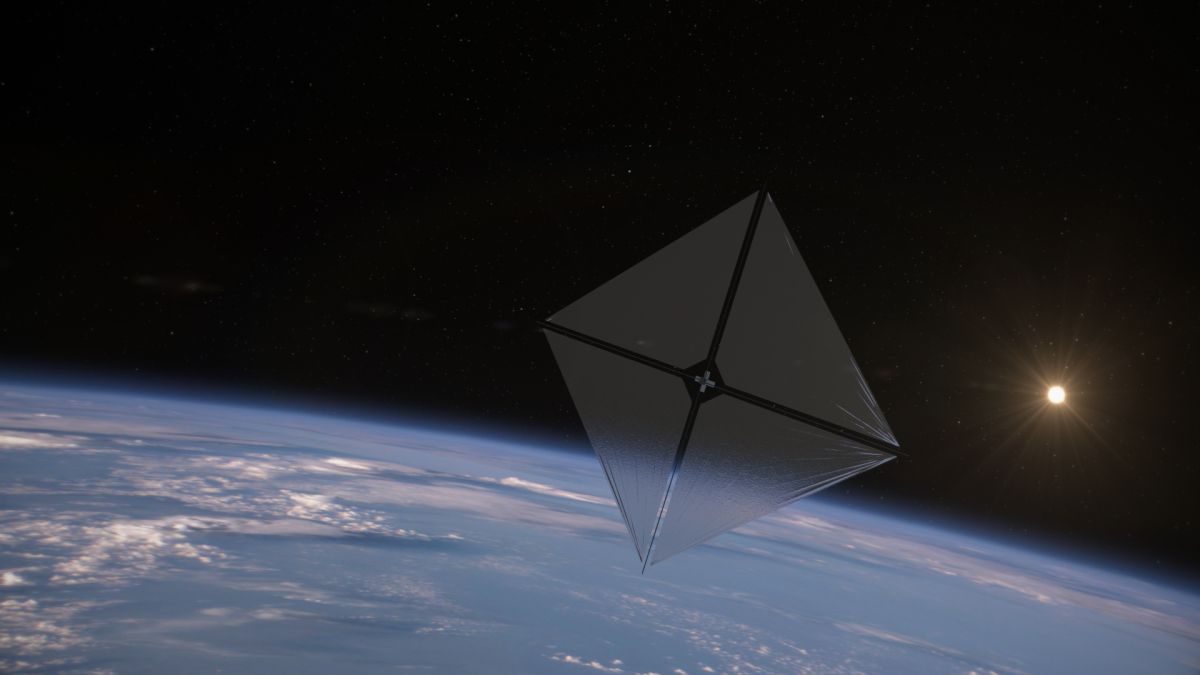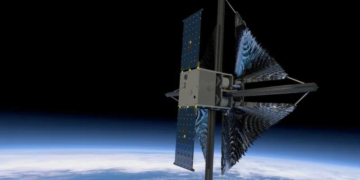Buckle up, space enthusiasts! A new era of solar-powered space exploration dawns as NASA readies the launch of the Advanced Composite Solar Sail System (ACS3), a pioneering mission scheduled for liftoff no earlier than April 24th.
This mission signifies a giant leap forward in developing alternative space propulsion methods, harnessing the power of sunlight itself to propel spacecraft across the vast cosmic ocean.

At the Heart of Innovation: The Deployable Boom Revolution
The cornerstone of ACS3 lies in its revolutionary deployment system for solar sails. Unlike previous missions that relied on cumbersome metal booms, ACS3 boasts a marvel of modern engineering – lightweight and compact booms constructed from carbon fiber reinforced polymer (CFRP). These innovative booms offer a game-changing solution:
- Unprecedented Packaging: Imagine a seven-meter structure that folds neatly into a shape that fits comfortably in your hand. That’s the magic of CFRP booms! Their compact design allows for efficient launch within a standard rocket, overcoming a major logistical hurdle for previous solar sail missions.
- Strength Meets Maneuverability: Despite their remarkable lightness, CFRP booms retain exceptional strength and rigidity. This perfect balance allows them to unfurl and maintain tension on the deployed solar sail, a crucial factor for efficient solar propulsion. Imagine a taut, billowing sail catching the sunlight’s gentle push, propelling the spacecraft forward with unwavering precision.
Harnessing the Sun’s Light: A Celestial Engine Ignites
The brilliance of solar sails lies in their elegant simplicity. They operate on the same fundamental principle as a sailboat, but instead of wind, they harness the pressure exerted by sunlight particles (photons). While the individual pushes from these photons might seem insignificant, their continuous nature allows spacecraft to achieve remarkable speeds over time, even rivaling those attained with conventional rockets fueled by heavy chemical propellants. This opens doors to a future where spacecraft can embark on long-duration missions without the limitations imposed by traditional fuels.
Beyond Our Solar System: Unveiling Distant Worlds
The potential of solar sails extends far beyond missions within our own solar system. Astrobiologists, enthralled by the possibility of extraterrestrial life, view solar sails as a game-changer for exploring distant celestial bodies. Icy moons like Europa (Jupiter’s moon) and Enceladus (Saturn’s moon) harbor potential conditions suitable for life as we know it, hidden beneath their frozen surfaces. Solar sails, with their fuel-less propulsion and maneuverability, could be the key to unlocking the secrets these distant worlds hold.
Building on Success, Reaching for the Stars
The ACS3 mission takes inspiration from the triumphs of earlier solar sail endeavors like the Planetary Society’s LightSail 2. LightSail 2 successfully demonstrated the viability of solar sails for spacecraft propulsion. However, it relied on metal booms, susceptible to unpredictable deformations caused by the extreme temperature fluctuations experienced in the harsh environment of space. ACS3’s innovative CFRP booms offer a more robust and versatile alternative, paving the way for future solar sail missions to venture further and achieve more.
A Dawn of a New Era: A Universe Propelled by Sunlight
The successful deployment and operation of ACS3 promises to be a pivotal moment in the annals of space exploration. The invaluable data gathered during the mission will act as a springboard for developing even more advanced solar sail technologies. This, in turn, could inspire entirely new applications and missions that push the boundaries of our cosmic reach. Imagine fleets of spacecraft, powered by the boundless energy of the sun, venturing into the unknown depths of space, unraveling the mysteries of distant galaxies. With the launch of ACS3, NASA takes a bold step towards a future where the very fabric of our cosmic voyages is woven from the threads of sunlight itself.



















